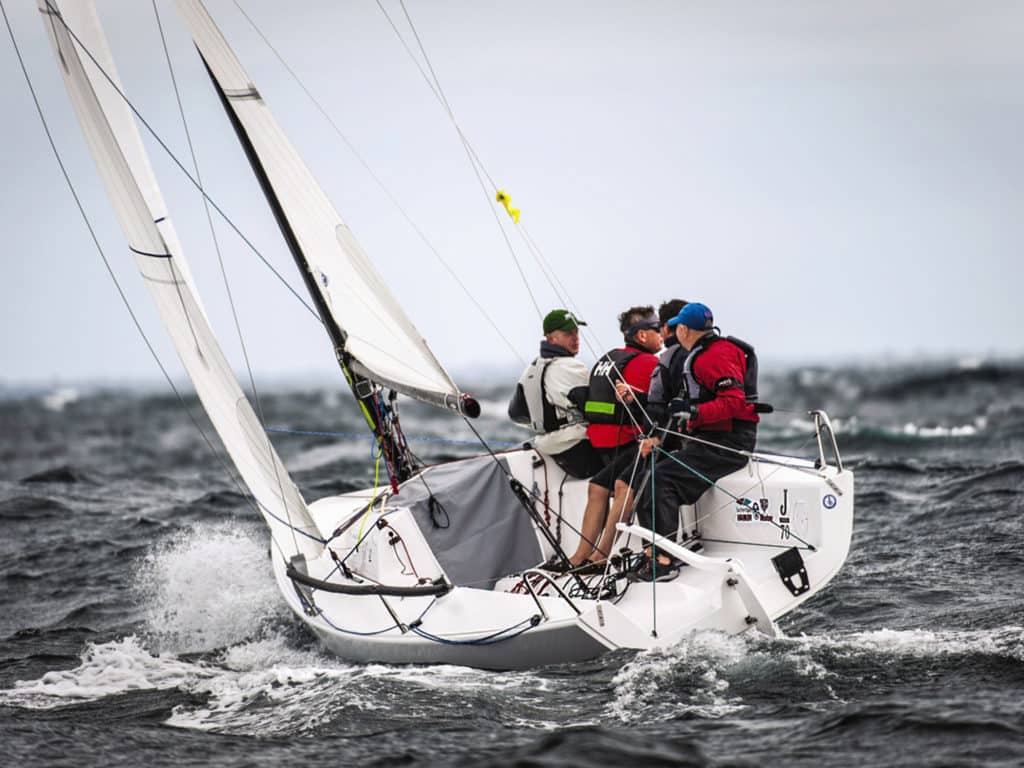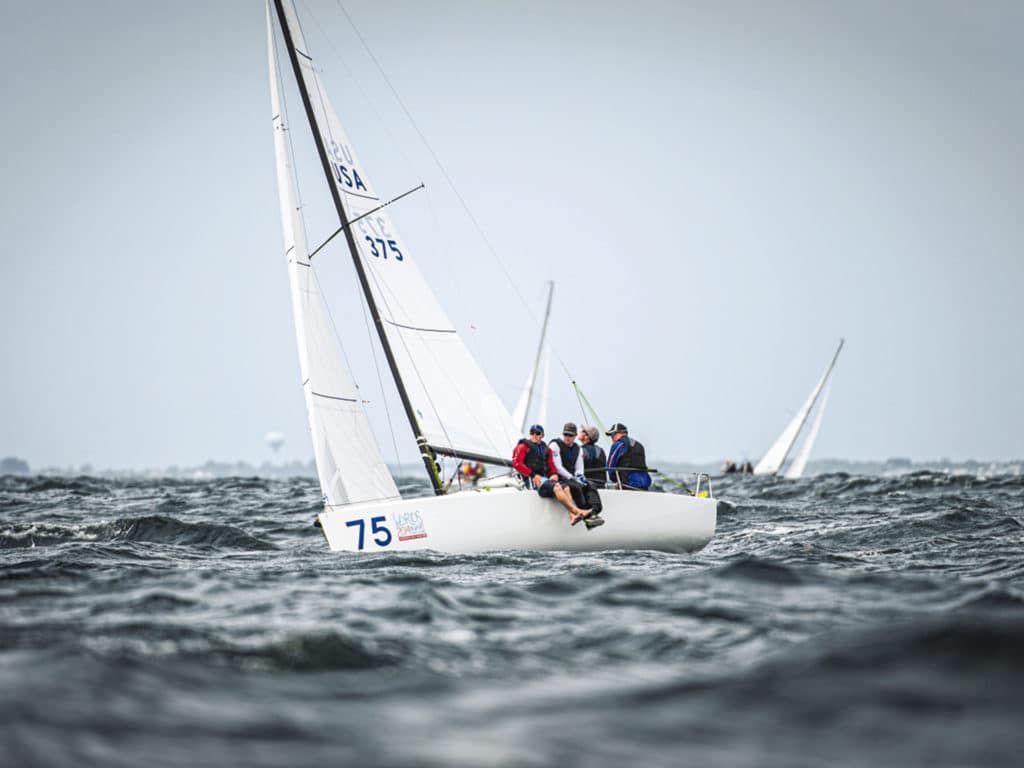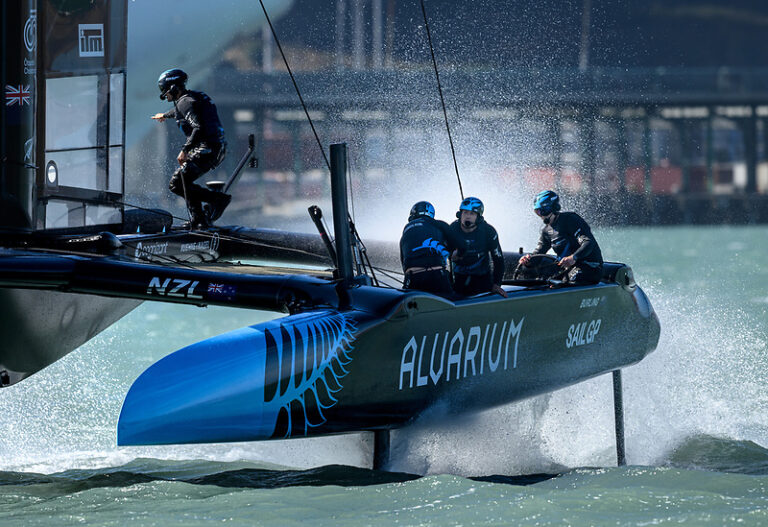
It’s 8 a.m. Monday at the loft, and a weekly ritual is taking place. Most of us are just back from weekend regattas. It’s time to Monday-morning quarterback our performances and, more important, those of our sails. We talk about how the new Melges 24 jib we’ve given to the current North American champion did in a local event, how the new Star main sent to Italy did in the Star Europeans. There will be emails and reports about how we can make the sails even better.
My turn. I’d gotten into bed about six hours earlier, having towed the loft-owned J/24 from San Francisco to San Diego, behind a retired plumber’s van. We’d sailed a long City Front day in 20-plus knots of wind against tide, so it’s a rough ride on the water followed by an even tougher ride home on the freeway—the glamour of a sailmaker. We’d finish fourth in a regatta we should have handily won. Not good, considering North Sails is paying for the boat, sails, crew food, airfare and all incidentals.
My explanation of our poor performance starts with criticism of my crew: The cockpit person couldn’t tack the genoa in 16 knots of wind. The tactician always had us headed the wrong direction and, more often than not, in bad air. In a place that puts a premium on good starts, my starts were inconsistent. In this venue, it’s all about winning the start and getting to the current relief first. Whiff the start and there’s a lot catching up to do. We whiffed plenty that weekend.
My boss, Vince Brun, stood sipping his coffee silently, listening. He raced or tested sails every weekend; he’d won more world championships in more classes than any of us combined and did not suffer fools gladly—especially when it came to sailboat racing. After about 15 minutes, he could contain himself no longer.

“Chris, you know what I think?” he blurted out in his distinct Brazilian accent. “I think you were slow.”
I stammered back, “No way.”
How could we be? We sailed a proven boat that Brun himself had just sailed to a close second at the J/24 Worlds in the same venue. The sails were new and identical to what the regatta winner used. We were at max weight, and I followed the tuning guide that I myself had written.
I debriefed with my team a few days later, telling them about Brun’s comment. To my surprise, they agreed, recalling times we had to tack off a lift because we could not hang off a leeward boat, or the time, even after a good start, we were quickly back in the noise of the fleet.
Later in the week, Brun reminded me that everyone is going to get a few bad starts now and then, and everyone is going to have a hard time tacking a big genoa in 18 knots of wind. Having more boatspeed than your competition erases those inevitable mistakes. True as that might be, the most frustrating part to me was that we hadn’t realized we were slow and therefore could not fix what we didn’t know was broken. If you want to do well in one-design racing, you at least have to be as fast as the top boats. And equally important, you must be able to tell when you’re not. I vowed to figure this out, and with the help of Brun and my team, we eventually did, pinpointing the need to identify problems and then making changes on the fly to rectify them.
Some obvious signs of being slow upwind are when you get a good start, on the lifted tack, but often have to tack soon after because of the effects of other boats; you are midfleet and fail to move up in the fleet on the upwind legs; in shifty conditions, you are most often on the wrong (headed) tack; boats to leeward and ahead or to bow even quickly pinch you off; boats to windward are always getting the puffs first and shearing up and away from you. Sound familiar?
The same is true downwind: You rarely gain boats; you can never get your boat down below the line of the boat ahead to be able to “crush” them when you jibe; you often find yourself jibing only to keep your air clear, not because of a shift.
The best way to know you’re slow is to watch boats close to you—the ones sailing in the same wind and waves—and monitor how you are doing relative to them with regard to your height and speed. If I am steering, I like the tactician (or one of the most experienced sailors) to constantly call how our performance stacks up against boats closest to us. To ensure clear, concise communication, always reference your performance against the other boat or boats.
The best way to know you’re slow is to watch boats close to you—the ones sailing in the same wind and waves—and monitor how you are doing relative to them with regard to your height and speed.
The audio track should be quite simple: “We are lower and slower, net loss; even, even; net even; higher and faster, net gain;” Information that helps the helmsman, jib, main and spinnaker trimmers adjust to keep the boat at maximum speed. This monitoring is important no matter where you are in the fleet. Human nature makes the feedback easier to give when you are near the front of the fleet, but from an overall performance perspective, feedback is much more valuable when you are working to dig out of the back of the fleet. The same talk track needs to continue downwind with the references reversed (lower and faster being good).
When making calls for relative performance upwind, always reference your boat’s performance, and always have the same person calling relative performance. When starting a new lineup (like after a tack), immediately note the compass heading or, if the boat you are racing is far away, use a hand-bearing compass get a bearing on it. Being on the outside of a lift or the leeward boat in a header can throw off your judgment if you do not know your initial heading.
The performance caller must note the distance that the boats are separated from each other athwartships. Being in the same wind makes comparisons more accurate. The more separation, the more likely you are to be in different winds.
The person calling is looking for two things and then a combination. First is comparative speed through the water. Second is how close you are sailing to the wind compared with the other boat. A boat sailing closer to the wind is “gaining gauge,” while a boat sailing lower is “losing gauge.”
Combining speed and height also gives the total performance of one boat versus the other. A boat that is higher and faster has better velocity made good. A boat that is lower and slower has worse VMG. Where the call gets tricky is when your opponent is better than you on only one of the two parameters. For example, if a boat is higher and slower, its VMG could be better, worse or the same as yours. These judgments come with experience, and that is why having the same person calling them is helpful. The more you do it, the better you get.
Your judgment about relative performance can be thrown off as a line of wind or a puff approaches, so take note of the relative position of the boats before that happens. Of course, the boat that gets the pressure first will gain.
It gets harder to see relative differences when there’s a significant distance between boats because the other boat will very likely be in different wind. In that case, use a hand-bearing compass to “shoot” the angle of the other boat. Doing this multiple times can tell you whether you’re gaining.
The real gain in judging relative performance comes when your team starts recognizing what’s making the other boat faster or slower, and then acting on that information aboard your boat. The toughest question in sailboat racing is, “How do you do tactics on a slow boat?” The answer is always: “You can’t.” Sail fast, and good tactics will follow.
Ed.’s note: Chris Snow now offers private coaching services; more at www.thefavoredend.com









